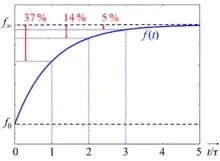In fluid dynamics it is often possible for a given geometry to isolate different degrees of freedom and model long range effects by a delayed influence. An example of this is the "delayed action oscillator" for the El Niño/Southern Oscillation phenomenon in oceanography.
For more details, see the page on the Azimuth wiki here.
Often fast degress of freedom are modeled by noise, i.e. the model consists of a delayed stochastic differential equation. An example for such a model can be seen here on the arXiv.
Besides the applications in climate science and abstract statistical physics, this kind of modelling is also important in engineering applications where the simplification is needed in order to get numerical results in time, for a successful control of a given system. Details can be found here:
- Harold J. Kushner: "Numerical methods for controlled stochastic delay systems." (Systems & Control: Foundations & Applications. Boston, MA: Birkhäuser)
Applications for biological systems can be found in this monograph:
- Hal: Smith: "An introduction to delay differential equations with applications to the life sciences." (Texts in Applied Mathematics 57. New York, NY: Springer.)
